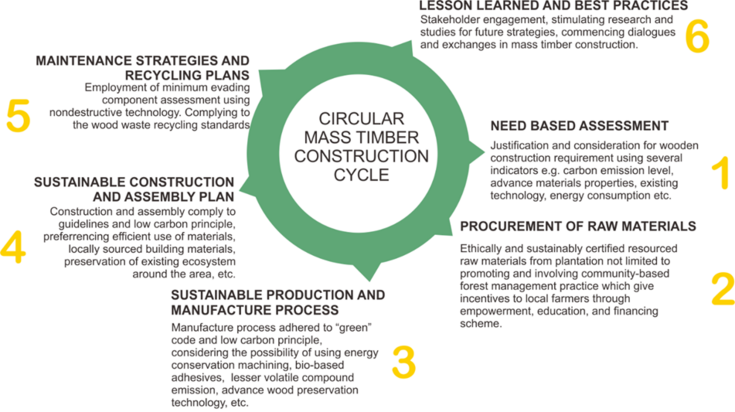Understanding critical properties of Indonesian wood species for sustainable building materials
SUPERVISOR: Ruper WIMMER
PROJECT ASSIGNED TO: Shofi FAUZIYYAH
The utilization of fast-growing timber species from community forests can be subjected to plenty of environmental, economic, and social benefits. One of many examples are the maximization of carbon sequestration rates by halting deforestation of natural forests, biodiversity, which should be paralleled by economic growth initiatives in local communities as well as empowering local farmers through collaborative forest management programs. In the development sector buildings play significant roles as they substantially contribute to greenhouse emissions. Studies have shown that employing wooden structures could reduce emissions by 14%, compared to currently used steel-reinforced buildings. This thesis is concerned with low-weight tropical species (“light-wood”), and an overview of the envisioned wood construction cycle is presented in Figure 1. The emerging use of tropical timber species as a viable resource for building constructions is targeted, which encompasses the collection and mainstreaming of existing data about fast-growing Indonesian wood species. During data collection intense testing and evaluation of selected wood species are done.

Fig. 1 Circular Mass Timber Construction Cycle
This PhD study will include a review on selected fast-growing wood species with regard to its physical and mechanical properties, showing current challenges and trends of species utilization for wood constructions, as well as existing wood quality improvement technologies in the industry. A next part of research will update the wood species database, including the evaluation of their natural durability, along with the physico-mechanical properties. Hence, the properties of engineered wood products derived from selected wood species are reported. The potential use of fast-growing species, also known as lightwoods, to be used in the building sectors, is the main focus of this research.
